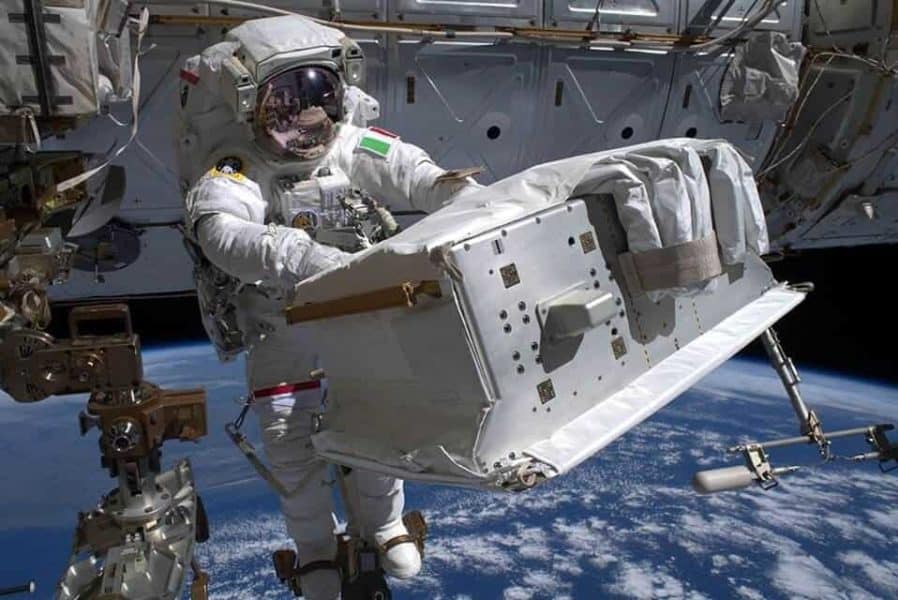Capturing particles in space isn’t easy. But it’s impossible when your machine is turned off. While the Alpha Magnetic Spectrometer (AMS) was originally designed for a three-year mission – from 2011-2014 – its mission was extended and it ran quite well until recently. When its system of cooling pumps failed, scientists needed to put it in a sleep mode. Now, it’s going to be back up and running again through the work of astronauts on the International Space Station (ISS).
The AMS is a particle physics detector attached to the ISS. It’s run by an international team from 16 countries, led by Nobel Laureate Samuel Ting, whose efforts are supported by the Department of Energy. From its unique position in space, AMS observes cosmic rays and particles. These data may reveal new information about some of the biggest questions in physics.
One of its science goals is to look for signs of dark matter. Dark matter makes up a quarter of the universe’s mass-energy. But we’ve never been able to detect a single particle of it. That’s a big mystery. The AMS has far better precision than previous attempts to measure dark matter in space that have used balloons or satellites. The AMS is also gathering data that can help answer questions scientists have about antimatter and cosmic rays.
While the AMS has far surpassed scientists’ expectations, there’s still more it could do. That’s why NASA astronaut Drew Morgan and European Space Agency astronaut Luca Parmitano have completed three out of four planned spacewalks to repair it. During this process, they are replacing the thermal control system – the part that cools things down – for one of the particle detectors. Because the AMS wasn’t designed to be repaired in space, these repairs are challenging the astronauts’ ability to adapt. NASA actually needed to develop new tools to complete this task. For the first time ever, the astronauts cut and reattached fluid lines in space.
As the AMS’s other parts appear to be in good shape, scientists expect it to start collecting data again soon. Thanks to the partnership between NASA, DOE, and 56 other institutions, the AMS will continue to reveal new information about the mysteries of the universe.
If our reporting has informed or inspired you, please consider making a donation. Every contribution, no matter the size, empowers us to continue delivering accurate, engaging, and trustworthy science and medical news. Independent journalism requires time, effort, and resources—your support ensures we can keep uncovering the stories that matter most to you.
Join us in making knowledge accessible and impactful. Thank you for standing with us!

